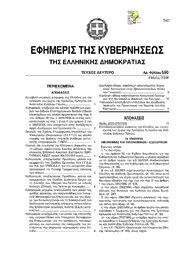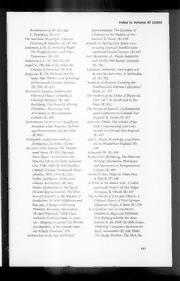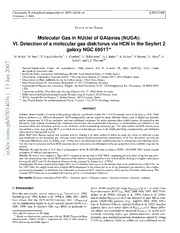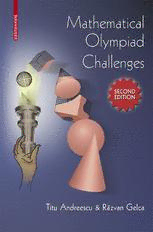
Mathematical Olympiad Challenges PDF
Preview Mathematical Olympiad Challenges
To Alina and to Our Mothers Titu Andreescu R˘azvan Gelca Mathematical Olympiad Challenges SECOND EDITION Foreword by Mark Saul Birkhäuser Boston • Basel • Berlin Titu Andreescu Răzvan Gelca University of Texas at Dallas Texas Tech University School of Natural Sciences Department of Mathematics and Mathematics and Statistics Richardson, TX 75080 Lubbock, TX 79409 USA USA titu.andreescu@utdallas.edu rgelca@gmail.com ISBN:978-0-8176-4528-1 e-ISBN:978-0-8176-4611-0 DOI:10.1007/978-0-8176-4611-0 MathematicsSubjectClassification(2000):00A05, 00A07, 05-XX, 11-XX, 51XX © Birkhäuser Boston, a part of Springer Science+Business Media, LLC, Second Edition 2009 © Birkhäuser Boston, First Edition 2000 Allrightsreserved.Thisworkmaynotbetranslatedorcopiedinwholeorinpartwithoutthewritten permissionofthepublisher(BirkhäuserBoston,c/oSpringerScience+BusinessMedia,LLC,233 SpringStreet,NewYork,NY10013,USA),exceptforbriefexcerptsinconnectionwithreviewsor scholarlyanalysis.Useinconnectionwithanyformofinformationstorageandretrieval,electronic adaptation,computersoftware,orbysimilarordissimilarmethodologynowknownorhereafterde- velopedisforbidden. Theuseinthispublicationoftradenames,trademarks,servicemarks,andsimilarterms,evenifthey arenotidentifiedassuch,isnottobetakenasanexpressionofopinionastowhetherornottheyare subjecttoproprietaryrights. Printedonacid-freepaper springer.com Contents Foreword xi PrefacetotheSecondEdition xiii PrefacetotheFirstEdition xv I Problems 1 1 GeometryandTrigonometry 3 1.1 APropertyofEquilateralTriangles. . . . . . . . . . . . . . . . . . . 4 1.2 CyclicQuadrilaterals . . . . . . . . . . . . . . . . . . . . . . . . . . 6 1.3 PowerofaPoint. . . . . . . . . . . . . . . . . . . . . . . . . . . . . 10 1.4 DissectionsofPolygonalSurfaces . . . . . . . . . . . . . . . . . . . 15 1.5 RegularPolygons . . . . . . . . . . . . . . . . . . . . . . . . . . . . 20 1.6 GeometricConstructionsandTransformations . . . . . . . . . . . . . 25 1.7 ProblemswithPhysicalFlavor . . . . . . . . . . . . . . . . . . . . . 27 1.8 TetrahedraInscribedinParallelepipeds . . . . . . . . . . . . . . . . . 29 1.9 TelescopicSumsandProductsinTrigonometry . . . . . . . . . . . . 31 1.10 TrigonometricSubstitutions . . . . . . . . . . . . . . . . . . . . . . 34 2 AlgebraandAnalysis 39 2.1 NoSquareIsNegative . . . . . . . . . . . . . . . . . . . . . . . . . 40 2.2 LookattheEndpoints . . . . . . . . . . . . . . . . . . . . . . . . . . 42 2.3 TelescopicSumsandProductsinAlgebra . . . . . . . . . . . . . . . 44 2.4 OnanAlgebraicIdentity . . . . . . . . . . . . . . . . . . . . . . . . 48 2.5 SystemsofEquations . . . . . . . . . . . . . . . . . . . . . . . . . . 50 2.6 Periodicity. . . . . . . . . . . . . . . . . . . . . . . . . . . . . . . . 55 2.7 TheAbelSummationFormula . . . . . . . . . . . . . . . . . . . . . 58 2.8 x+1/x . . . . . . . . . . . . . . . . . . . . . . . . . . . . . . . . . 62 2.9 Matrices . . . . . . . . . . . . . . . . . . . . . . . . . . . . . . . . . 64 2.10 TheMeanValueTheorem . . . . . . . . . . . . . . . . . . . . . . . 66 vi Contents 3 NumberTheoryandCombinatorics 69 3.1 ArrangeinOrder . . . . . . . . . . . . . . . . . . . . . . . . . . . . 70 3.2 SquaresandCubes . . . . . . . . . . . . . . . . . . . . . . . . . . . 71 3.3 Repunits . . . . . . . . . . . . . . . . . . . . . . . . . . . . . . . . 74 3.4 DigitsofNumbers. . . . . . . . . . . . . . . . . . . . . . . . . . . . 76 3.5 Residues . . . . . . . . . . . . . . . . . . . . . . . . . . . . . . . . . 79 3.6 DiophantineEquationswiththeUnknownsasExponents . . . . . . . 83 3.7 NumericalFunctions . . . . . . . . . . . . . . . . . . . . . . . . . . 86 3.8 Invariants . . . . . . . . . . . . . . . . . . . . . . . . . . . . . . . . 90 3.9 PellEquations . . . . . . . . . . . . . . . . . . . . . . . . . . . . . . 94 3.10 PrimeNumbersandBinomialCoefficients . . . . . . . . . . . . . . . 99 II Solutions 103 1 GeometryandTrigonometry 105 1.1 APropertyofEquilateralTriangles. . . . . . . . . . . . . . . . . . . 106 1.2 CyclicQuadrilaterals . . . . . . . . . . . . . . . . . . . . . . . . . . 110 1.3 PowerofaPoint. . . . . . . . . . . . . . . . . . . . . . . . . . . . . 118 1.4 DissectionsofPolygonalSurfaces . . . . . . . . . . . . . . . . . . . 125 1.5 RegularPolygons . . . . . . . . . . . . . . . . . . . . . . . . . . . . 134 1.6 GeometricConstructionsandTransformations . . . . . . . . . . . . . 145 1.7 ProblemswithPhysicalFlavor . . . . . . . . . . . . . . . . . . . . . 151 1.8 TetrahedraInscribedinParallelepipeds . . . . . . . . . . . . . . . . . 156 1.9 TelescopicSumsandProductsinTrigonometry . . . . . . . . . . . . 160 1.10 TrigonometricSubstitutions . . . . . . . . . . . . . . . . . . . . . . 165 2 AlgebraandAnalysis 171 2.1 NoSquareisNegative . . . . . . . . . . . . . . . . . . . . . . . . . 172 2.2 LookattheEndpoints . . . . . . . . . . . . . . . . . . . . . . . . . . 176 2.3 TelescopicSumsandProductsinAlgebra . . . . . . . . . . . . . . . 183 2.4 OnanAlgebraicIdentity . . . . . . . . . . . . . . . . . . . . . . . . 188 2.5 SystemsofEquations . . . . . . . . . . . . . . . . . . . . . . . . . . 190 2.6 Periodicity. . . . . . . . . . . . . . . . . . . . . . . . . . . . . . . . 197 2.7 TheAbelSummationFormula . . . . . . . . . . . . . . . . . . . . . 202 2.8 x+1/x. . . . . . . . . . . . . . . . . . . . . . . . . . . . . . . . . . 209 2.9 Matrices . . . . . . . . . . . . . . . . . . . . . . . . . . . . . . . . . 214 2.10 TheMeanValueTheorem . . . . . . . . . . . . . . . . . . . . . . . 217 3 NumberTheoryandCombinatorics 223 3.1 ArrangeinOrder . . . . . . . . . . . . . . . . . . . . . . . . . . . . 224 3.2 SquaresandCubes . . . . . . . . . . . . . . . . . . . . . . . . . . . 227 3.3 Repunits . . . . . . . . . . . . . . . . . . . . . . . . . . . . . . . . . 232 3.4 DigitsofNumbers. . . . . . . . . . . . . . . . . . . . . . . . . . . . 235 3.5 Residues . . . . . . . . . . . . . . . . . . . . . . . . . . . . . . . . . 242 3.6 DiophantineEquationswiththeUnknownsasExponents . . . . . . . 246 Contents vii 3.7 NumericalFunctions . . . . . . . . . . . . . . . . . . . . . . . . . . 252 3.8 Invariants . . . . . . . . . . . . . . . . . . . . . . . . . . . . . . . . 260 3.9 PellEquations . . . . . . . . . . . . . . . . . . . . . . . . . . . . . . 264 3.10 PrimeNumbersandBinomialCoefficients . . . . . . . . . . . . . . . 270 AppendixA:DefinitionsandNotation 277 A.1 GlossaryofTerms . . . . . . . . . . . . . . . . . . . . . . . . . . . . 278 A.2 GlossaryofNotation . . . . . . . . . . . . . . . . . . . . . . . . . . 282 Matematica˘,matematica˘,matematica˘,ataˆtamatematica˘? Nu,maimulta˘.1 GrigoreMoisil 1Mathematics,mathematics,mathematics,thatmuchmathematics?No,evenmore. Foreword WhyOlympiads? Workingmathematiciansoftentellusthatresultsinthefieldareachievedafterlong experience and a deep familiarity with mathematical objects, that progress is made slowlyandcollectively,andthatflashesofinspirationaremerepunctuationinperiods ofsustainedeffort. TheOlympiadenvironment,incontrast,demandsarelativelybriefperiodofintense concentration,asksforquickinsightsonspecificoccasions,andrequiresaconcentrated butisolatedeffort.YetwehavefoundthatparticipantsinmathematicsOlympiadshave oftengoneontobecomefirst-classmathematiciansorscientistsandhaveattachedgreat significancetotheirearlyOlympiadexperiences. For many of these people, the Olympiad problem is an introduction, a glimpse intotheworldofmathematicsnotaffordedbytheusualclassroomsituation. A good Olympiadproblemwillcaptureinminiaturetheprocessofcreatingmathematics. It’s all there: the period of immersion in the situation, the quiet examination of possible approaches,thepursuitofvariouspathstosolution. Thereisthefruitlessdeadend,as well as the path that endsabruptlybut offersnew perspectives, leading eventuallyto thediscoveryofabetterroute.Perhapsmostobviously,grapplingwithagoodproblem providespracticeindealingwiththefrustrationofworkingatmaterialthatrefusesto yield.Ifthesolverislucky,therewillbethemomentofinsightthatheraldsthestartof a successfulsolution. Like a well-craftedworkof fiction, a goodOlympiadproblem tellsastoryofmathematicalcreativitythatcapturesagoodpartoftherealexperience andleavestheparticipantwantingstillmore. And this book gives us more. It weaves together Olympiad problems with a common theme, so that insights become techniques, tricks become methods, and methods build to mastery. Although each individual problem may be a mere appe- tizer, the table is set here for more satisfying fare, which will take the reader deeper intomathematicsthanmightanysingleproblemorcontest. The book is organized for learning. Each section treats a particular technique or topic. Introductory results or problems are provided with solutions, then related problemsarepresented,withsolutionsinanothersection. The craft of a skilled Olympiad coach or teacher consists largely in recognizing similarities among problems. Indeed, this is the single most important skill that the coach can impart to the student. In this book, two master Olympiad coaches have offeredtheresultsoftheirexperiencetoawideraudience.Teacherswillfindexamples and topics for advanced students or for their own exercise. Olympiad stars will find xii Foreword practice material that will leave them stronger and more ready to take on the next challenge, from whatever corner of mathematics it may originate. Newcomers to Olympiadswillfindanorganizedintroductiontotheexperience. Thereisalsosomethinghereforthemoregeneralreaderwhoisinterestedinmathe- matics. Simplyperusingtheproblems,lettingtheirbeautycatchtheeye,andworking through the authors’ solutions will add to the reader’s understanding. The multiple solutionslinktogetherareasofmathematicsthatarenotapparentlyrelated.Theyoften illustratehowasimplemathematicaltool—ageometrictransformation,oranalgebraic identity—canbeusedinanovelway,stretchedorreshapedtoprovideanunexpected solutiontoadauntingproblem. Theseproblemsaredauntingonanylevel.Truetoitstitle,thebookisachallenging one.Therearenoelementaryproblems—althoughthereareelementarysolutions.The contentof the bookbeginsjust at the edge of the usualhigh schoolcurriculum. The calculusissometimesreferredto,butrarelyleanedon,eitherforsolutionorformoti- vation. Propertiesofvectorsandmatrices, standardinEuropeancurricula,aredrawn upon freely. Any reader should be prepared to be stymied, then stretched. Much is demandedof the reader by way of effortand patience, but the reader’sinvestmentis greatlyrepaid. Inthis,itisnotunlikemathematicsasawhole. MarkSaul BronxvilleSchool
The list of books you might like

As Good as Dead

The Strength In Our Scars

Atomic Habits James Clear

Better Than the Movies
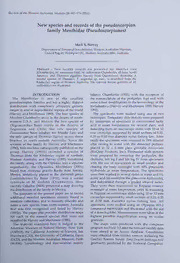
NEW SPECIES AND RECORDS OF THE PSEUDOSCORPION FAMILY MENTHIDAE (PSEUDOSCORPIONES)
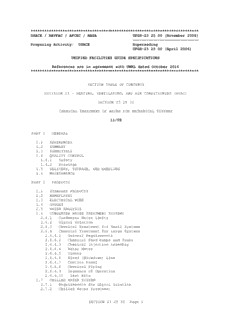
UFGS 23 25 00 Chemical Treatment of Water for Mechanical Systems
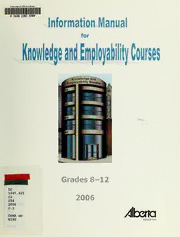
Information manual for knowledge and employability courses : grades 8-12
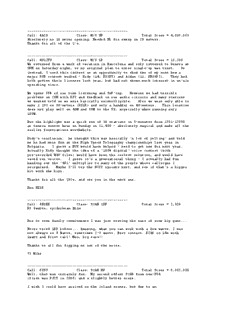
Call: 4A2S Class: M/S HP Total Score = 4839663 Absolutely no 10 mete
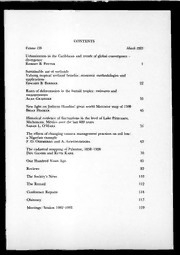
The Geographical Journal 1993: Vol 159 Table of Contents

C. J. Cherryh - Union Alliance - Cyteen

Black Alibi
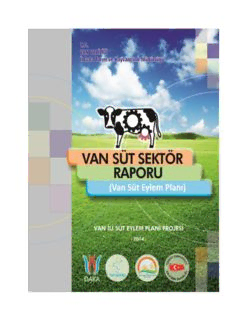
Süt Sektör Raporu (Van Süt Eylem Planı)

Advances in Computer Methods and Geomechanics: IACMAG Symposium 2019: IACMAG Symposium 2019 Volume 1

C. J. Cherryh - Union Alliance - Rimrunners

Color Atlas of Physiology

AiKiDô: The Trinity of Conflict Transformation
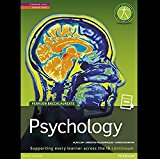
Pearson Baccalaureate
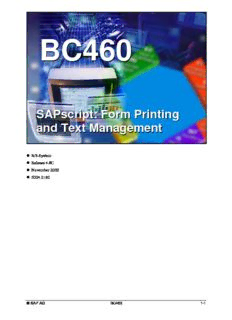
BC460 SAPscript
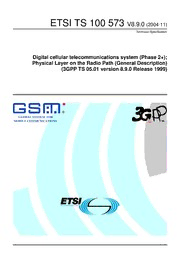
TS 100 573 - V8.9.0 - Digital cellular telecommunications system (Phase 2+); Physical Layer on the Radio Path (General Description) (3GPP TS 05.01 version 8.9.0 Release 1999)
